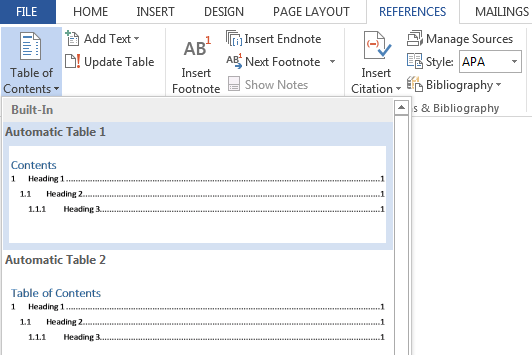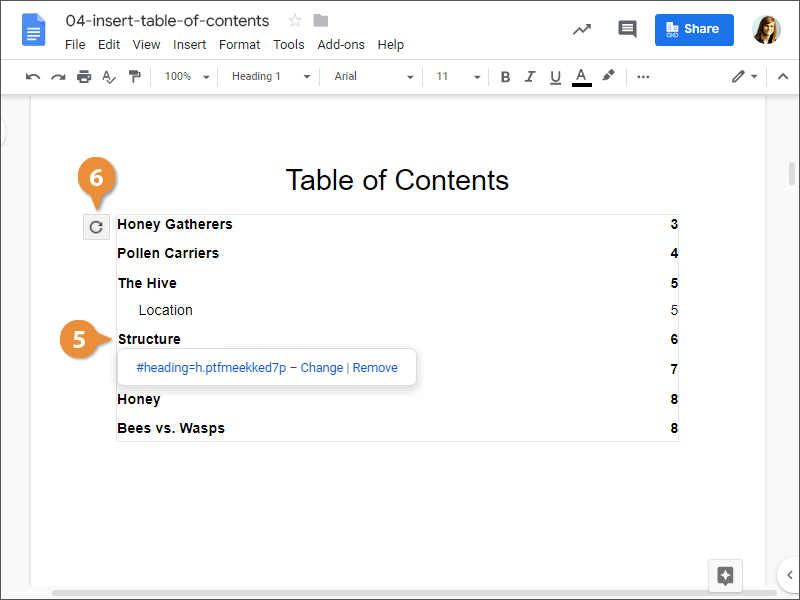

- #HOW TO CREATE TABLE OF CONTENTS IN WORD PAGE NUMBERS HOW TO#
- #HOW TO CREATE TABLE OF CONTENTS IN WORD PAGE NUMBERS UPDATE#
- #HOW TO CREATE TABLE OF CONTENTS IN WORD PAGE NUMBERS WINDOWS 10#
- #HOW TO CREATE TABLE OF CONTENTS IN WORD PAGE NUMBERS DOWNLOAD#
Click TOC 2’s dropdown and choose Modify from the resulting submenu.Thumb down in the styles pane until you find TOC 2.To demonstrate, let’s add color to level 2, which corresponds to Heading 2 and TOC 2. Once you have the table of contents styles in the Styles pane, you can easily modify them.
#HOW TO CREATE TABLE OF CONTENTS IN WORD PAGE NUMBERS HOW TO#
How to modify a table of contents style in Word In truth, you added all of the styles to the pane, not just the table of contents styles.įigure C Display all styles, alphabetically, in the Style Pane.

If you’re working in a document that already has a table of contents, you’ll find the table of content styles in use.

To access the table of contents styles, click the Home tab, and then click the dialog launcher for the Style group to open the Styles.

If you want to permanently format the table of contents, you’ll have to modify the corresponding styles. Word uses a dedicated set of styles to format a table of contents. Fortunately, there’s an easier solution: Modify the built-in table of contents styles.
#HOW TO CREATE TABLE OF CONTENTS IN WORD PAGE NUMBERS UPDATE#
You could add direct formatting to the table of contents, but every time you update it, you’ll have to reapply the format. Word doesn’t use the heading styles (whether built-in or custom) applied to the document’s headings to format a table of contents. (If you’re using a theme, blue might not be the predominant color.)įigure A The table of contents isn’t blue even though the built-in heading styles are. I added a direct color format, red, to one Heading 2 instance to be comprehensive. The table of contents will not have the same formatting as the heading styles.įigure A shows a simple table of contents with three heading levels: Heading 1, Heading 2, and Heading 3. As a general rule, a table of contents is fairly bland. You might expect heading styles used in your Word document to persist in a table of contents, but that’s not how it works while this behavior might seem odd at first, it’s by design. LEARN MORE: Office 365 Consumer pricing and features Word’s default table of contents The browser edition will display an existing table of contents and even let you update it, but you can’t add a table of contents or modify a style.
#HOW TO CREATE TABLE OF CONTENTS IN WORD PAGE NUMBERS DOWNLOAD#
You can work with your own document or download the demonstration.
#HOW TO CREATE TABLE OF CONTENTS IN WORD PAGE NUMBERS WINDOWS 10#
I’m using Office 365 on a Windows 10 64-bit system, but you can use earlier versions of Word. I’ll show you how to modify the table of contents styles–specifically, we’ll add a bit of color, but you could apply a number of formats. Word uses Heading 1, Heading 2, and so on to build a table of contents however, the resulting table of contents by default is almost devoid of formatting–it’s downright bland. If you’re working on a document that requires a table of contents, Microsoft Word has an easy-to-implement feature based on built-in heading styles. Instead, learn how to modify the table's underlying styles. You can add formatting directly, but you'll have to reapply it every time you update the table. Word's table of contents, by default, has no formatting. How to format a table of contents in a Word document


 0 kommentar(er)
0 kommentar(er)
